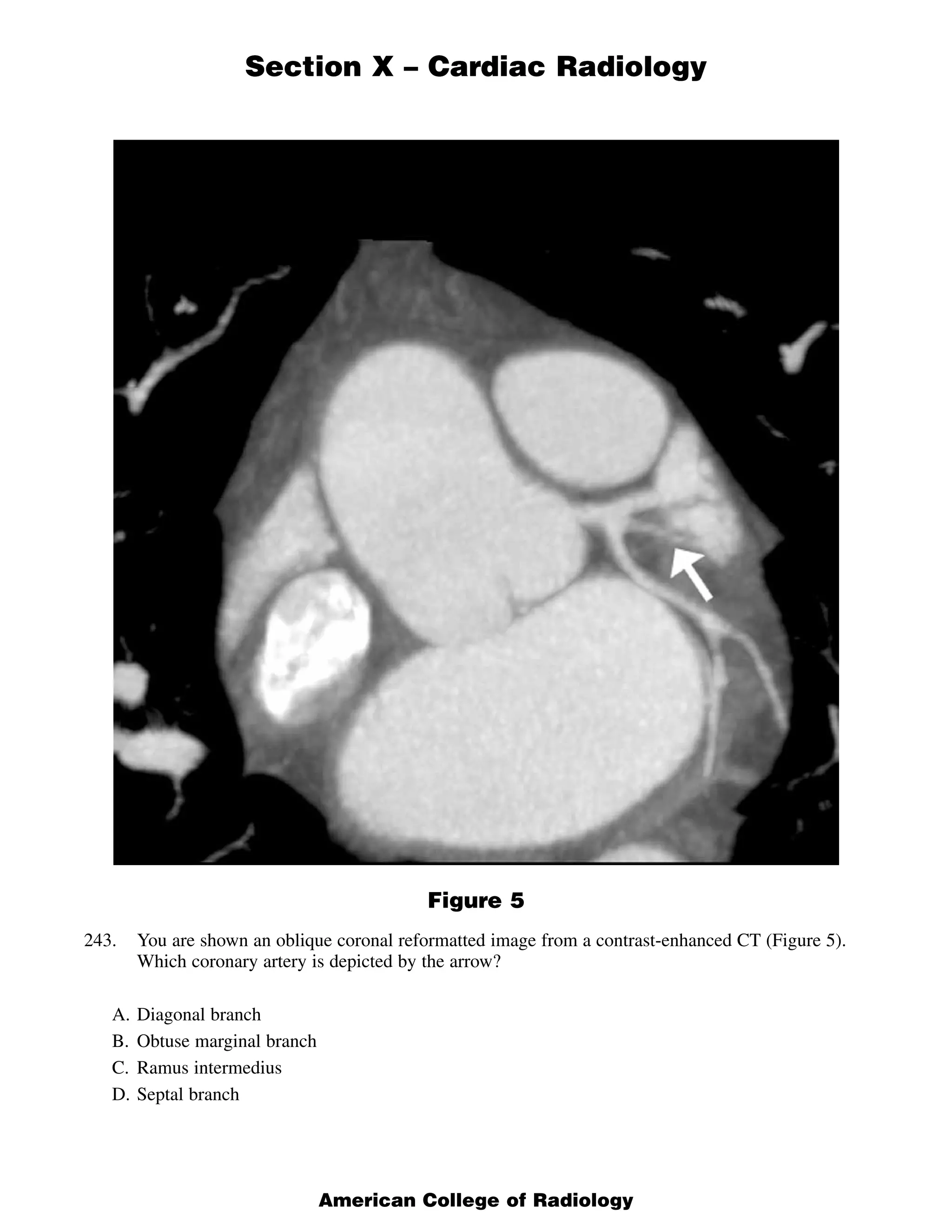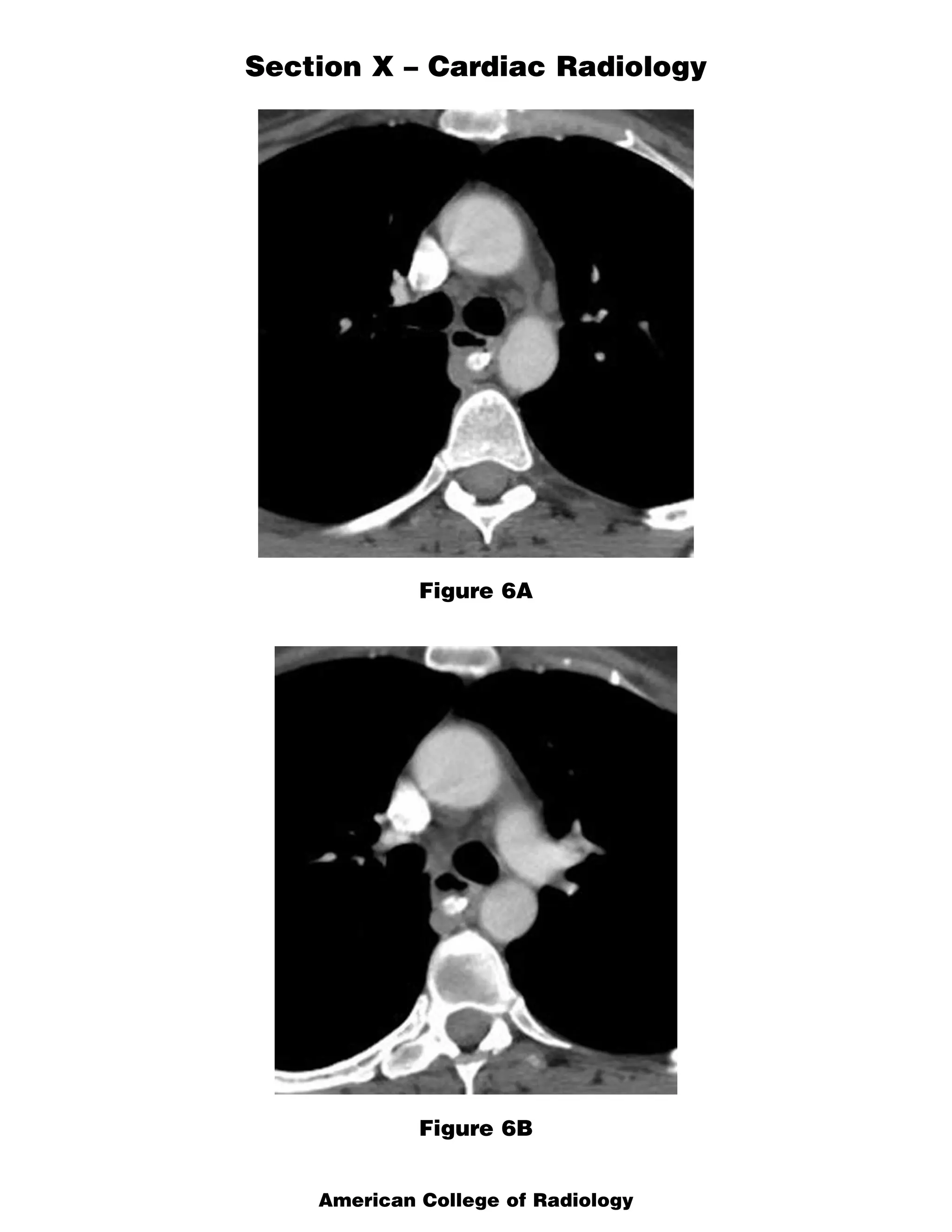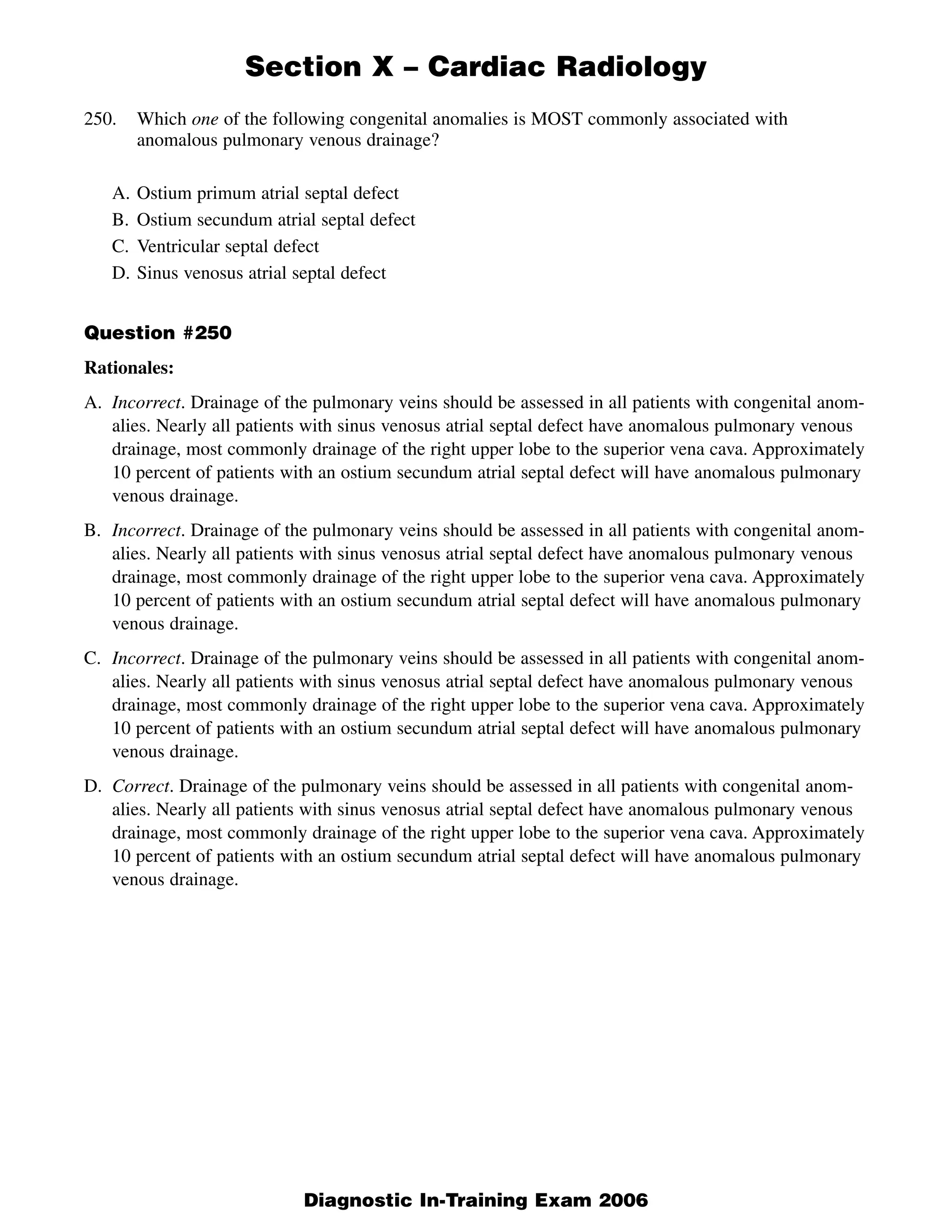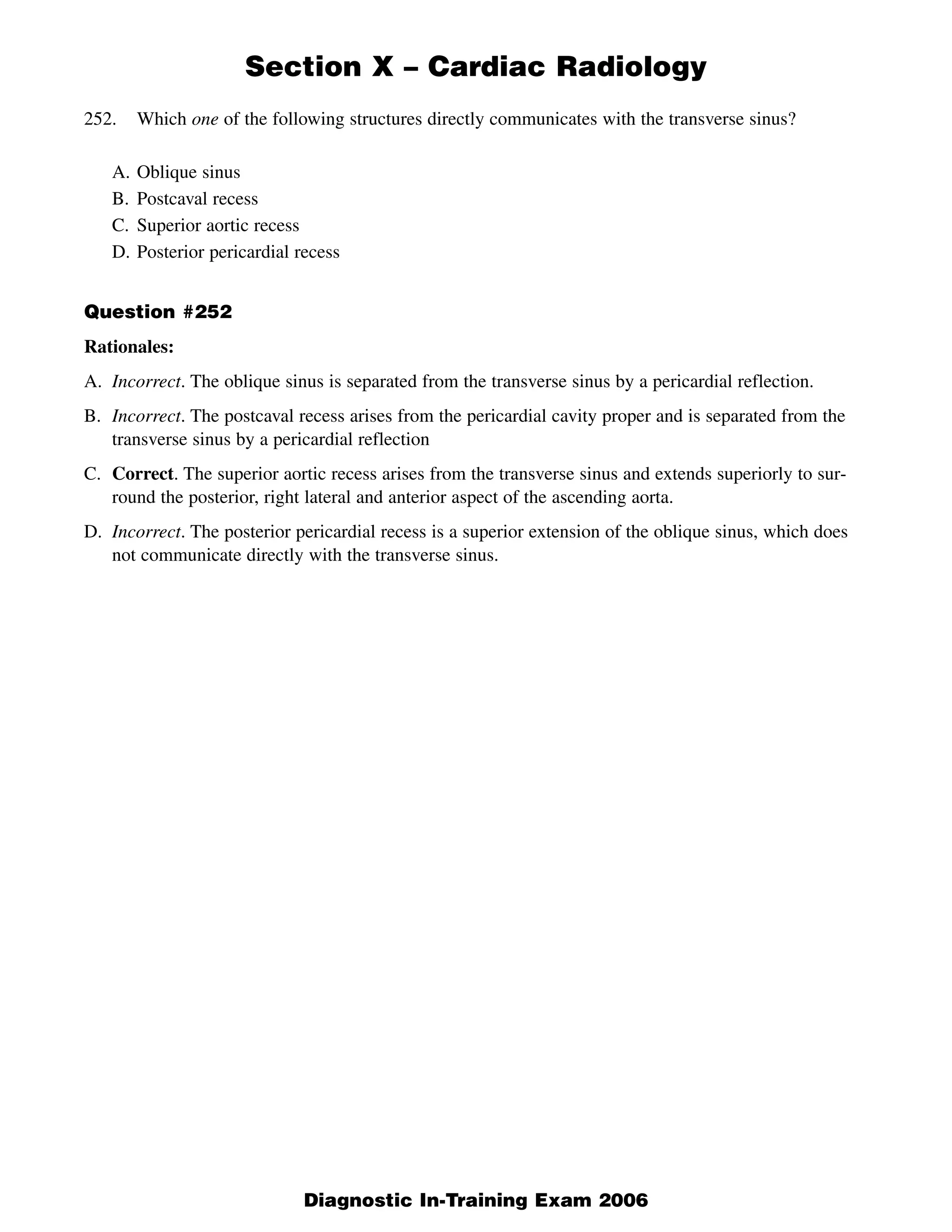Embed presentation
Downloaded 343 times





































This document contains a series of chest radiograph and CT images along with questions about cardiac findings. Image 1 shows calcification of the aortic valve on a lateral chest x-ray, consistent with aortic stenosis. Image 2 shows calcifications in the wall of the left atrium on a non-contrast CT, related to prior endocarditis from rheumatic heart disease. Image 3 demonstrates enlargement of the central pulmonary arteries and diminished peripheral vasculature on chest x-ray, characteristic of pulmonary hypertension due to emphysema (cor pulmonale). Image 4 shows a defect in the superolateral aspect of the atrial septum on CT, consistent with a sinus



































